Composite Heat Sink Material for Superconducting Tape in Fault Current Limiter Applications
Abstract
1. Introduction
2. Experimental
2.1. Materials
2.2. Sample Preparation
- Bulk samples of dedicated shape for measurements of thermo-physical properties of high-cp materials,
- Hastelloy/Ag tapes coated with the high-cp layer for mechanical testing and thermal cycling,
- Superconducting tapes coated with the high-cp layer for limitation experiments.
2.3. Experimental Procedures
3. Results and Discussion
3.1. Thermal Expansion
3.2. Heat Capacity
3.3. Thermal Diffusivity and Thermal Conductivity
3.4. Flexibility at Room Temperature
3.5. Resistance Against Thermal Shock
3.6. Fault Current Limitation
4. Conclusions
Author Contributions
Funding
Acknowledgments
Conflicts of Interest
References
- Kalsi, S.S. Applications of High Temperature Superconductors to Electric Power Equipment, 1st ed.; Wiley: Hoboken, NJ, USA, 2011; pp. 59–303. [Google Scholar]
- Badakhshan, M.; Mousavi, S.M.G. Flux-lock type of superconducting fault current limiters: A comprehensive review. Phys. C Supercond. 2018, 547, 51–54. [Google Scholar] [CrossRef]
- Ahn, M.C.; Park, D.K.; Yang, S.E.; Kim, M.J.; Kim, H.M.; Kang, H.; Nam, K.; Seok, B.-Y.; Park, J.-W.; Ko, T.K. A Study on the Design of the Stabilizer of Coated Conductor for Applying to SFCL. IEEE Trans. Appl. Supercond. 2007, 17, 1855–1858. [Google Scholar] [CrossRef]
- Martínez, E.; Angurel, L.A.; Pelegrin, J.; Xie, Y.Y.; Selvamanickam, V. Thermal stability analysis of YBCO-coated conductors subject to over-currents. Supercond. Sci. Technol. 2009, 23, 25011. [Google Scholar] [CrossRef]
- Ekin, J. Experimental Techniques for Low-Temperature Measurements, 1st ed.; Oxford University Press (OUP): Boulder, CO, USA, 2006; pp. 49–83. [Google Scholar]
- Dhir, V.K. Boiling heat transfer. Annu. Rev. Fluid Mech. 1998, 30, 365–401. [Google Scholar] [CrossRef]
- Rubeli, T.; Colangelo, D.; Dutoit, B.; Vojenciak, M. Heat transfer monitoring between quenched high-temperature superconducting coated conductors and liquid nitrogen. Prog. Supercond. Cryog. 2015, 17, 10–13. [Google Scholar] [CrossRef][Green Version]
- Hellmann, S.; Noe, M. Influence of Different Surface Treatments on the Heat Flux from Solids to Liquid Nitrogen. IEEE Trans. Appl. Supercond. 2013, 24, 1–5. [Google Scholar] [CrossRef]
- Roy, F.; Dutoit, B.; Grilli, F.; Sirois, F. Magneto-Thermal Modeling of Second-Generation HTS for Resistive Fault Current Limiter Design Purposes. IEEE Trans. Appl. Supercond. 2008, 18, 29–35. [Google Scholar] [CrossRef]
- Majka, M.; Kozak, J.; Kozak, S. HTS Tapes Selection for Superconducting Current Limiters. IEEE Trans. Appl. Supercond. 2017, 27, 1–5. [Google Scholar] [CrossRef]
- Mogro-Campero, A.; Paik, K.W.; Turner, L.G. Degradation of thin films of YBa2Cu3O7 by annealing in air and in vacuum. J. Supercond. Nov. Magn. 1995, 8, 95–98. [Google Scholar] [CrossRef]
- FastGrid—Cost Effective FCL Using Advanced Superconducting Tapes for Future HVDC Grids. Available online: https://fastgrid-h2020.eu (accessed on 20 February 2020).
- Pascal, P.T.; Badel, A.; Auran, G.; Pereira, G.S. Superconducting Fault Current Limiter for Ship Grid Simulation and Demonstration. IEEE Trans. Appl. Supercond. 2017, 27, 1–5. [Google Scholar] [CrossRef]
- Badel, A.; Escamez, F.; Tixador, P. REBCO FCL modelling: Influence of local critical current no-uniformities on overall behaviour for various tape architecture. IEEE Trans. Appl. Supercond. 2015, 25, 5600504. [Google Scholar] [CrossRef]
- Yazawa, T.; Koyanagi, K.; Takahashi, M.; Ono, M.; Toba, K.; Takigami, H.; Urata, M.; Iijima, Y.; Saito, T.; Ameniya, N.; et al. Superconducting fault current limiter using high-resistive YBCO tapes. Phys. C Supercond. 2008, 468, 2046–2049. [Google Scholar] [CrossRef]
- Yuki, K.; Ito, S.; Hashizume, H. Recovery performance of partially-joined porous-stabilized REBCO tape for resistive type superconducting fault current limiters. Supercond. Sci. Technol. 2020, 33, 034002. [Google Scholar] [CrossRef]
- Búran, M.; Vojenciak, M.; Mošať, M.; Ghabeli, A.; Solovyov, M.; Pekarčíková, M.; Kopera, Ľ.; Gomory, F. Impact of a REBCO coated conductor stabilization layer on the fault current limiting functionality. Supercond. Sci. Technol. 2019, 32, 095008. [Google Scholar] [CrossRef]
- Vojenciak, M.; Dutoit, B.; Souc, J.; Gomory, F. Can Resistive-Type Fault Current Limiter Operate in Cryogen-Free Environment? IEEE Trans. Appl. Supercond. 2016, 26, 1–4. [Google Scholar] [CrossRef]
- Van De Camp, W.; Dhalle, M.; Wessel, W.; Warnet, L.; Atli-Veltin, B.; Van Der Putten, S.; Dam, J.; Ter Brake, H. Cryogenic Fatigue and Stress-strain Behavior of a Fibre Metal Laminate. Phys. Procedia 2015, 67, 1043–1048. [Google Scholar] [CrossRef]
- Shin, H.-J.; Kim, K.L.; Choi, Y.; Kwon, O.J.; Hahn, S.; Iwasa, Y.; Yoo, D.J. Corrections to “Effects of Impregnating Materials on Thermal and Electrical Stabilities of the HTS Racetrack Pancake Coils Without Turn-to-Turn Insulation” [Jun 13 7700404]. IEEE Trans. Appl. Supercond. 2013, 23, 9700201. [Google Scholar] [CrossRef]
- Yanagisawa, Y.; Sato, K.; Piao, R.; Nakagome, H.; Takematsu, T.; Takao, T.; Kamibayashi, H.; Takahashi, M.; Maeda, H. Removal of degradation of the performance of an epoxy impregnated YBCO-coated conductor double pancake coil by using a polyimide-electrodeposited YBCO-coated conductor. Phys. C Supercond. 2012, 476, 19–22. [Google Scholar] [CrossRef]
- Hu, D.; Ainslie, M.D.; Rush, J.P.; Durrell, J.H.; Zou, J.; Raine, M.; Hampshire, D.P. DC characterization and 3D modelling of a triangular, epoxy-impregnated high temperature superconducting coil. Supercond. Sci. Technol. 2015, 28, 65011. [Google Scholar] [CrossRef]
- Barth, C.; Bagrets, N.; Weiss, K.-P.; Bayer, C.M.; Bast, T. Degradation free epoxy impregnation of REBCO coils and cables. Supercond. Sci. Technol. 2013, 26, 55007. [Google Scholar] [CrossRef]
- Tani, J.-I.; Kimura, H.; Hirota, K.; Kido, H. Thermal expansion and mechanical properties of phenolic resin/ZrW2O8composites. J. Appl. Polym. Sci. 2007, 106, 3343–3347. [Google Scholar] [CrossRef]
- Sun, L.; Sneller, A.; Kwon, P. ZrW2O8-containing composites with near-zero coefficient of thermal expansion fabricated by various methods: Comparison and optimization. Compos. Sci. Technol. 2008, 68, 3425–3430. [Google Scholar] [CrossRef]
- Sheng, J.; Wang, L.D.; Li, D.; Cao, W.P.; Feng, Y.; Wang, M.; Yang, Z.Y.; Zhao, Y.; Fei, W.D. Thermal expansion behaviour of copper matrix composite containing negative thermal expansion PbTiO3 particles. Mater. Des. 2017, 132, 442–447. [Google Scholar] [CrossRef]
- Jeong, S.-H.; Song, J.-B.; Choi, Y.; Kim, S.-G.; Go, B.-S.; Park, M.; Yoo, D.J. Effect of micro-ceramic fillers in epoxy composites on thermal and electrical stabilities of GdBCO coils. Compos. Part B Eng. 2016, 94, 190–196. [Google Scholar] [CrossRef]
- Yung, K.C.; Liem, H.; Yung, W.K.C. Enhanced thermal conductivity of boron nitride epoxy-matrix composite through multi-modal particle size mixing. J. Appl. Polym. Sci. 2007, 106, 3587–3591. [Google Scholar] [CrossRef]
- Jeong, S.-H.; Song, J.-B.; Kim, K.L.; Choi, Y.; Yoo, D.J. Enhanced thermal properties of epoxy composite containing cubic and hexagonal boron nitride fillers for superconducting magnet applications. Compos. Part B Eng. 2016, 107, 22–28. [Google Scholar] [CrossRef]
- Pekarčíková, M.; Drienovsky, M.; Krajčovič, J.; Mišík, J.; Cuninková, E.; Húlan, T.; Bošák, O.; Vojenčiak, M. Analysis of thermo-physical properties of materials suitable for thermal stabilization of superconducting tapes for high-voltage superconducting fault current limiters. J. Therm. Anal. Calorim. 2019, 138, 4375–4383. [Google Scholar] [CrossRef]
- Murabayashi, M.; Takahashi, Y.; Mukaibo, T. Measurement of Heat Capacity at High Temperatures by Laser Flash Method Heat Capacity of Alumina. J. Nucl. Sci. Technol. 1970, 7, 312–316. [Google Scholar] [CrossRef][Green Version]
- De Faoite, D.; Browne, D.; Chang-Díaz, F.R.; Stanton, K. A review of the processing, composition, and temperature-dependent mechanical and thermal properties of dielectric technical ceramics. J. Mater. Sci. 2011, 47, 4211–4235. [Google Scholar] [CrossRef]
- Silicon Carbide, SiC Ceramic Properties. Available online: https://accuratus.com/silicar.html (accessed on 2 February 2020).
- Nakano, H.; Watari, K.; Kinemuchi, Y.; Ishizaki, K.; Urabe, K. Microstructural characterization of high-thermal-conductivity SiC ceramics. J. Eur. Ceram. Soc. 2004, 24, 3685–3690. [Google Scholar] [CrossRef]
- Chung, D. Materials for thermal conduction. Appl. Therm. Eng. 2001, 21, 1593–1605. [Google Scholar] [CrossRef]
- AZO Materials. E-glass Fibre. Available online: https://www.azom.com/properties.aspx?ArticleID=764 (accessed on 20 February 2020).
- Shen, D.; Zhan, Z.; Liu, Z.; Cao, Y.; Zhou, L.; Liu, Y.; Dai, W.; Nishimura, K.; Li, C.; Lin, C.-T.; et al. Enhanced thermal conductivity of epoxy composites filled with silicon carbide nanowires. Sci. Rep. 2017, 7, 2606. [Google Scholar] [CrossRef] [PubMed]
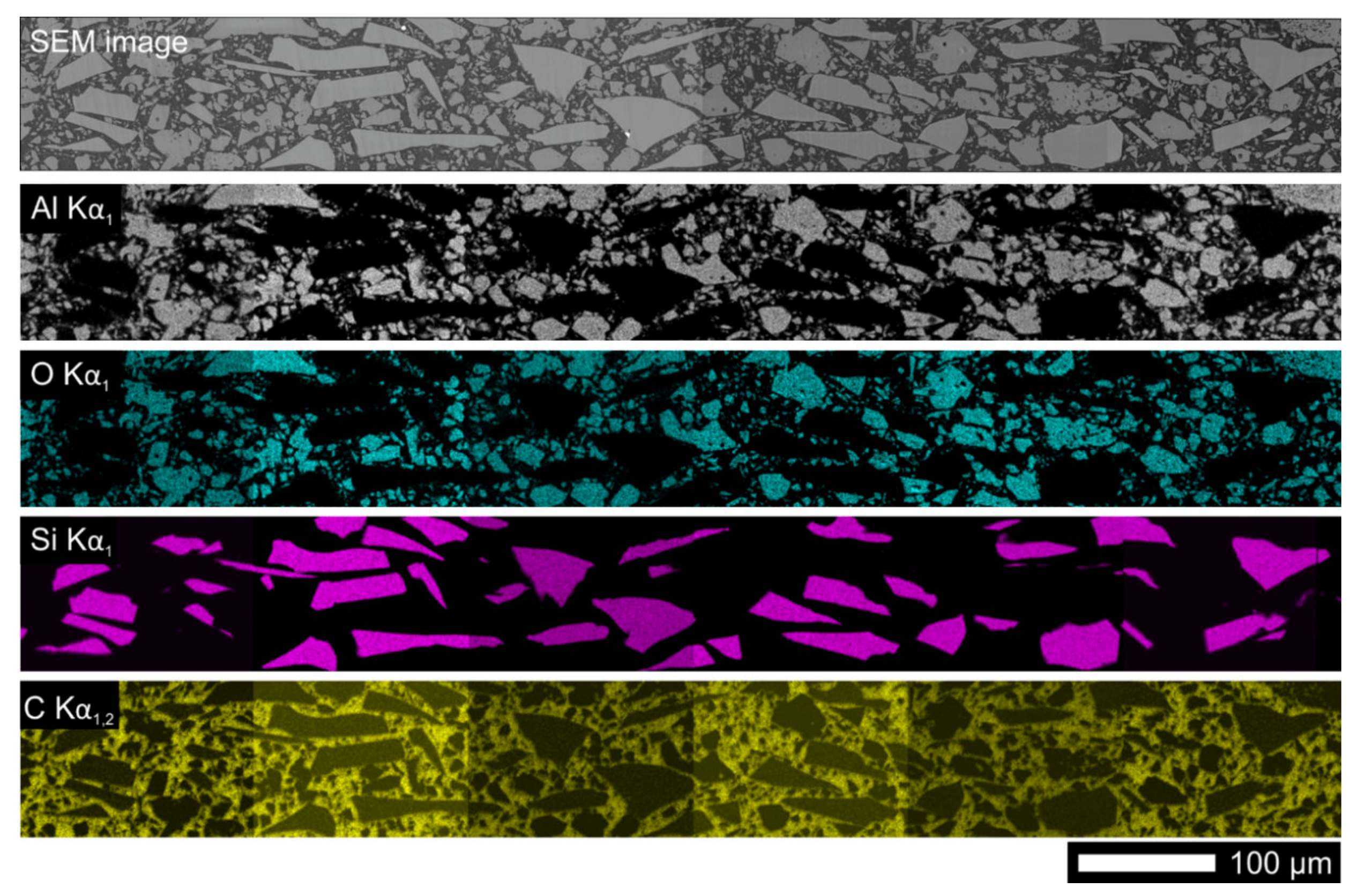

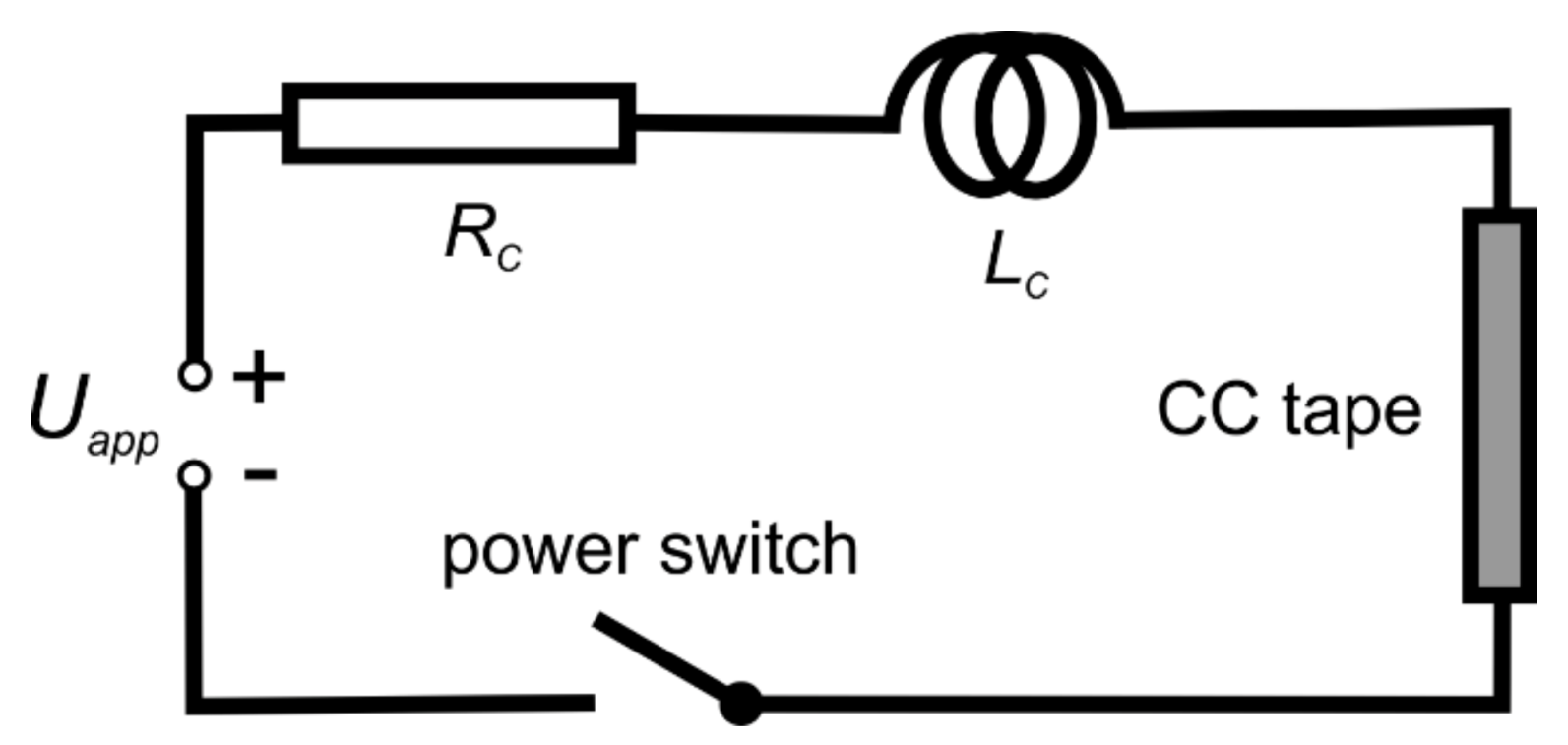
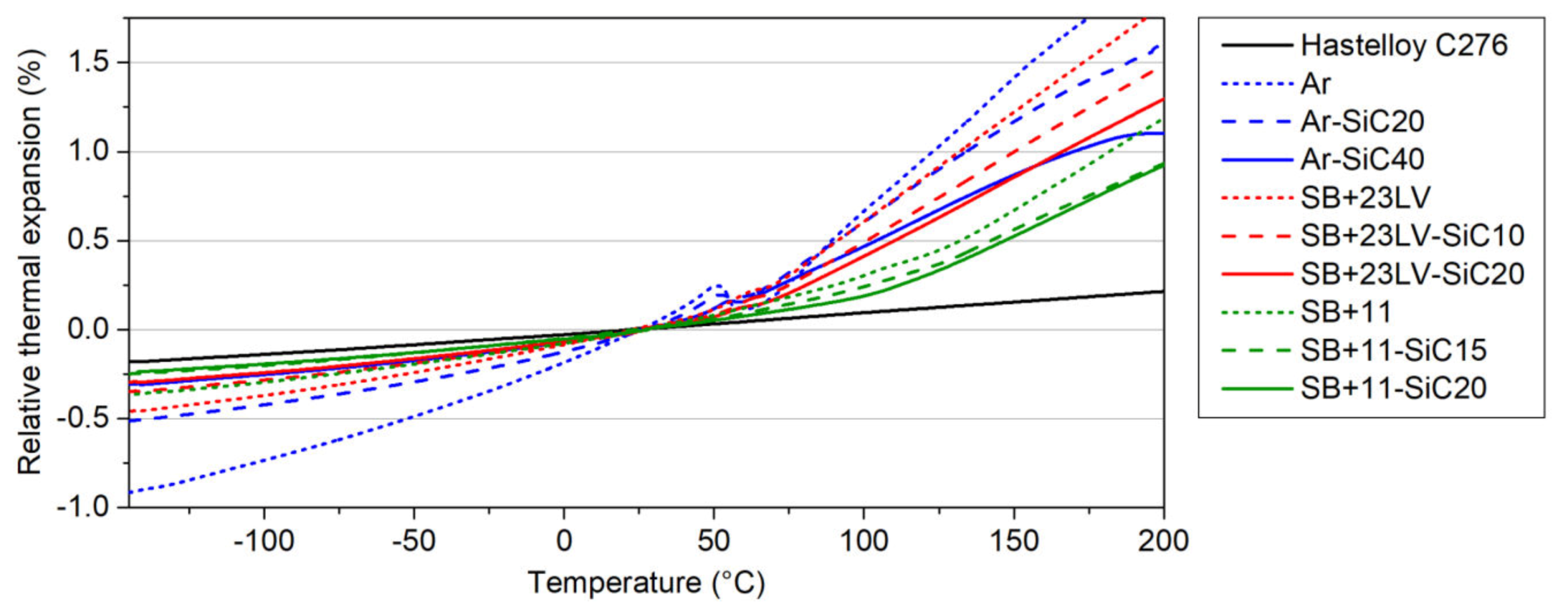
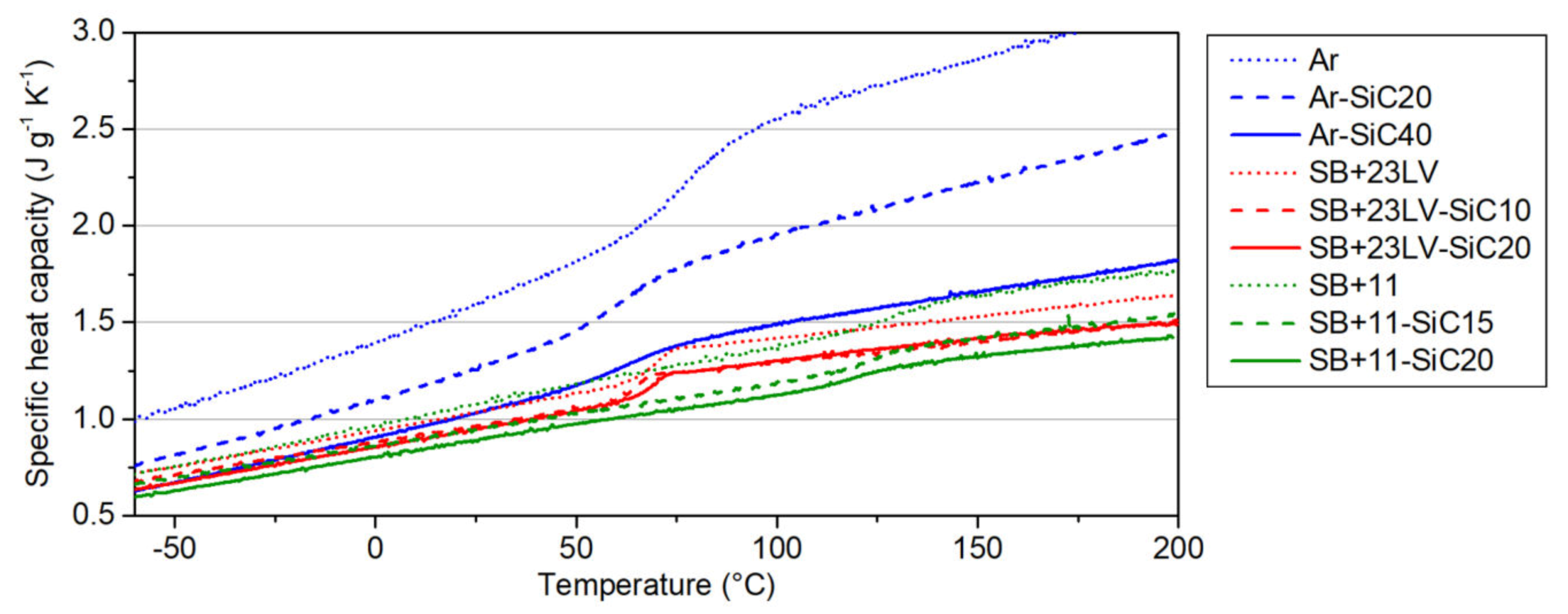
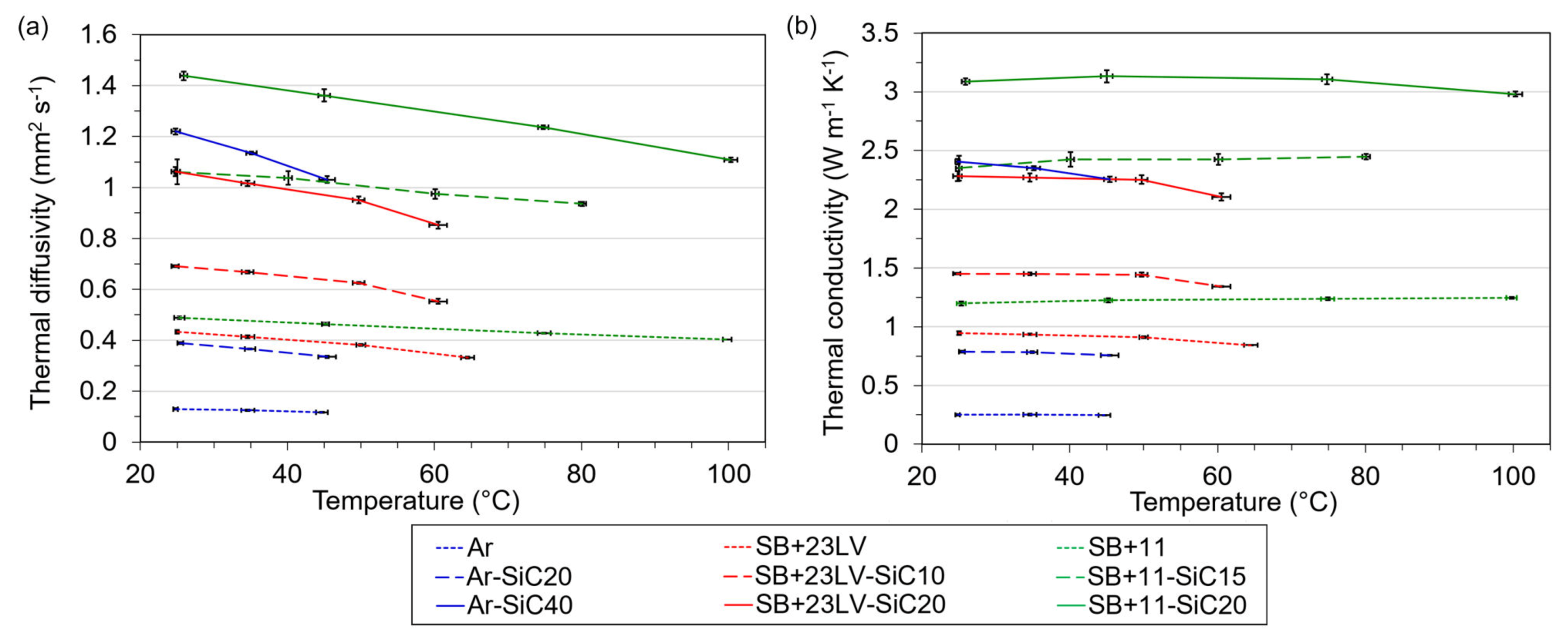
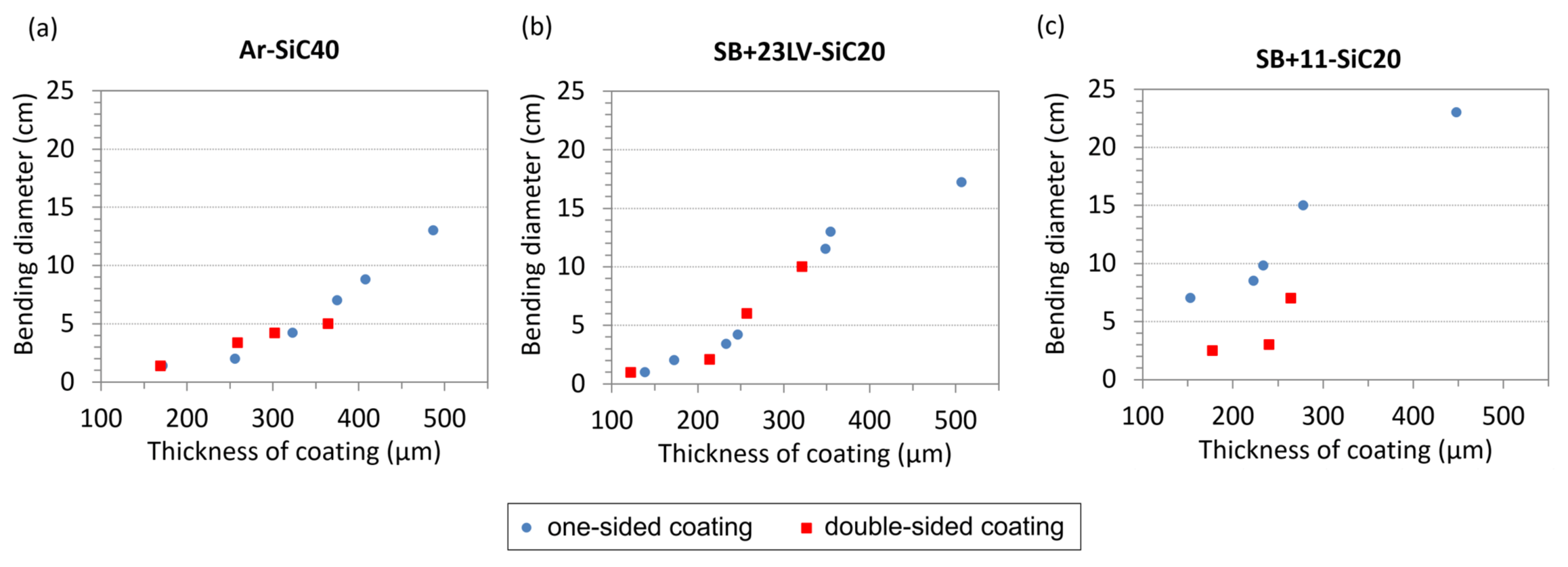

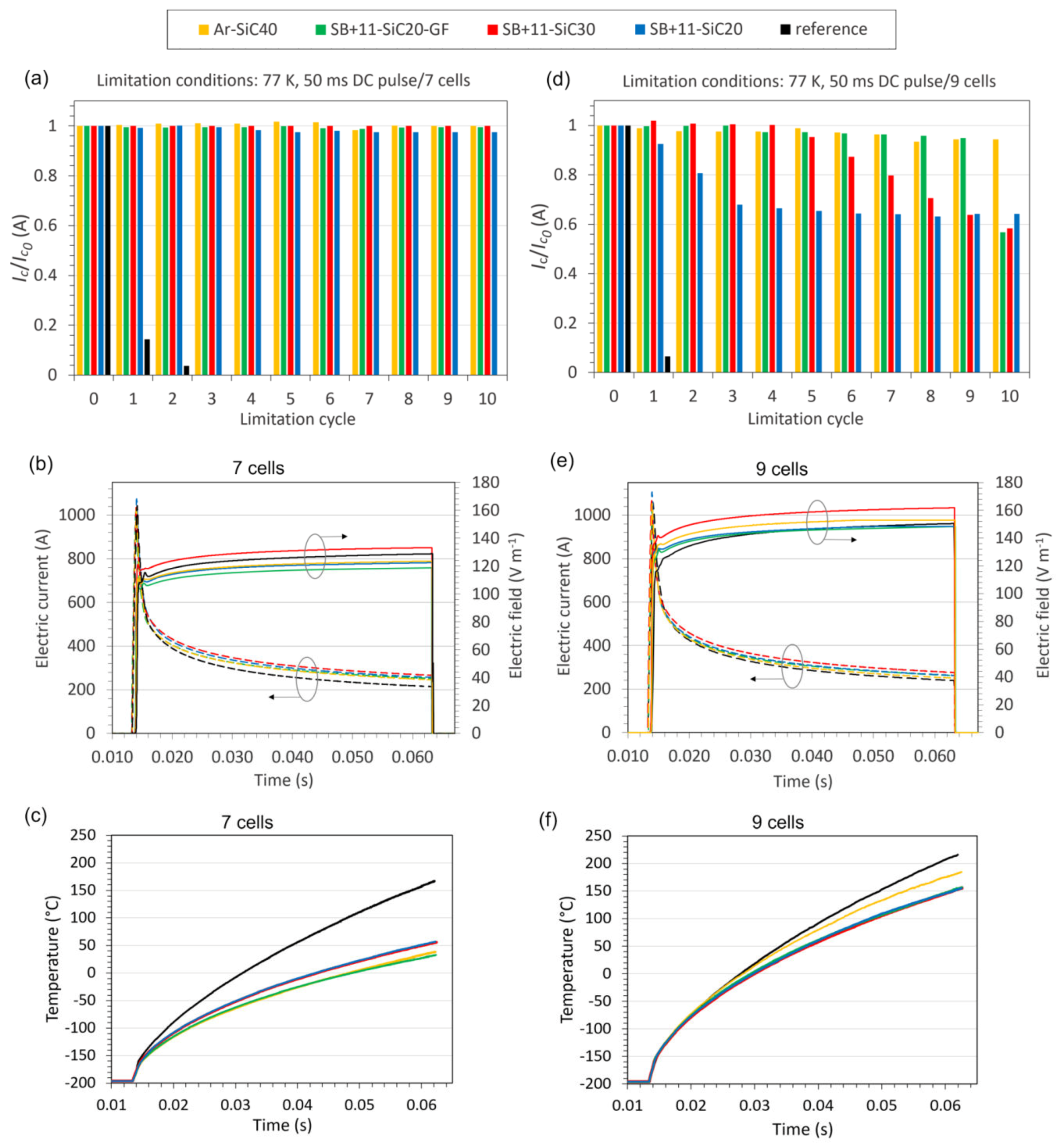


| Name | Material | Curing | cp at RT [J g−1 K−1] | α at RT [W m−1 K−1] | CTERT [× 10−6 K−1] |
|---|---|---|---|---|---|
| Ar | Araldite DBF + HY 951 | 48 h @ RT | 1.60 | 0.25 | 78 |
| SB + 23LV | Stycast 2850 FT + Catalyst 23LV | 24 h @ RT | 1.04 | 0.90 | 38 |
| SB + 11 | Stycast FT 2850 + Catalyst 11 | 1 h @ 125 °C + 4 h @ 150 °C | 1.07 | 1.19 | 28 |
| Al2O3 | aluminium oxide | — | 0.78 [31] | 28 [32] | 6 [32] |
| SiC | silicon carbide | — | 0.75 [33] | 250 [34] | 4 [35] |
| GF | E-glass fibres | — | 0.80 [36] | 1.3 [36] | 5 [36] |
| Sample | Resin + Hardener | Mix Ratio | Filler |
|---|---|---|---|
| Ar | Araldite DBF + Aradur HY 951 | 100:10 | — |
| Ar-SiC20 | Araldite DBF + Aradur HY 951 | 100:10 | 20 vol.% of SiC |
| Ar-SiC40 | Araldite DBF + Aradur HY 951 | 100:10 | 40 vol.% of SiC |
| SB + 23LV | Stycast 2850 FT + Catalyst 23LV | 100:7.5 | — |
| SB + 23LV-SiC10 | Stycast 2850 FT + Catalyst 23LV | 100:7.5 | 10 vol.% of SiC |
| SB + 23LV-SiC20 | Stycast 2850 FT + Catalyst 23LV | 100:7.5 | 20 vol.% of SiC |
| SB + 11 | Stycast 2850 FT + Catalyst 11 | 100:8.5 | — |
| SB + 11-SiC15 | Stycast 2850 FT + Catalyst 11 | 100:8.5 | 15 vol.% of SiC |
| SB + 11-SiC20 | Stycast 2850 FT + Catalyst 11 | 100:8.5 | 20 vol.% of SiC |
| SB + 11-SiC20-GF | Stycast 2850 FT + Catalyst 11 | 100:8.5 | 20 vol.% of SiC, reinforced with glass fibres |
| SB + 11-SiC30 | Stycast 2850 FT + Catalyst 11 | 100:12 | 30 vol.% of SiC |
| Sample | Density (g cm−3) | Tg (°C) | CTERT (×10−6 K−1) | Average CTE Below/Above Tg (×10−6 K−1) |
|---|---|---|---|---|
| Ar | 1.180 ± 0.006 | 59 | 78 | 58/122 |
| Ar-SiC20 | 1.613 ± 0.001 | 57 | 54 | 32/93 |
| Ar-SiC40 | 1.906 ± 0.003 | 59 | 32 | 20/63 |
| SB + 23LV | 2.104 ± 0.006 | 67 | 38 | 30/121 |
| SB + 23LV-SiC10 | 2.104 ± 0.009 | 66 | 26 | 21/99 |
| SB + 23LV-SiC20 | 2.271 ± 0.002 | 67 | 24 | 18/89 |
| SB + 11 | 2.271 ± 0.007 | 127 | 28 | 22/100 |
| SB + 11-SiC15 | 2.345 ± 0.001 | 122 | 17 | 16/76 |
| SB + 11-SiC20 | 2.691 ± 0.004 | 122 | 17 | 14/78 |
© 2020 by the authors. Licensee MDPI, Basel, Switzerland. This article is an open access article distributed under the terms and conditions of the Creative Commons Attribution (CC BY) license (http://creativecommons.org/licenses/by/4.0/).
Share and Cite
Pekarčíková, M.; Mišík, J.; Drienovský, M.; Krajčovič, J.; Vojenčiak, M.; Búran, M.; Mošať, M.; Húlan, T.; Skarba, M.; Cuninková, E.; et al. Composite Heat Sink Material for Superconducting Tape in Fault Current Limiter Applications. Materials 2020, 13, 1832. https://doi.org/10.3390/ma13081832
Pekarčíková M, Mišík J, Drienovský M, Krajčovič J, Vojenčiak M, Búran M, Mošať M, Húlan T, Skarba M, Cuninková E, et al. Composite Heat Sink Material for Superconducting Tape in Fault Current Limiter Applications. Materials. 2020; 13(8):1832. https://doi.org/10.3390/ma13081832
Chicago/Turabian StylePekarčíková, Marcela, Jozef Mišík, Marian Drienovský, Jozef Krajčovič, Michal Vojenčiak, Marek Búran, Marek Mošať, Tomáš Húlan, Michal Skarba, Eva Cuninková, and et al. 2020. "Composite Heat Sink Material for Superconducting Tape in Fault Current Limiter Applications" Materials 13, no. 8: 1832. https://doi.org/10.3390/ma13081832
APA StylePekarčíková, M., Mišík, J., Drienovský, M., Krajčovič, J., Vojenčiak, M., Búran, M., Mošať, M., Húlan, T., Skarba, M., Cuninková, E., & Gömöry, F. (2020). Composite Heat Sink Material for Superconducting Tape in Fault Current Limiter Applications. Materials, 13(8), 1832. https://doi.org/10.3390/ma13081832







